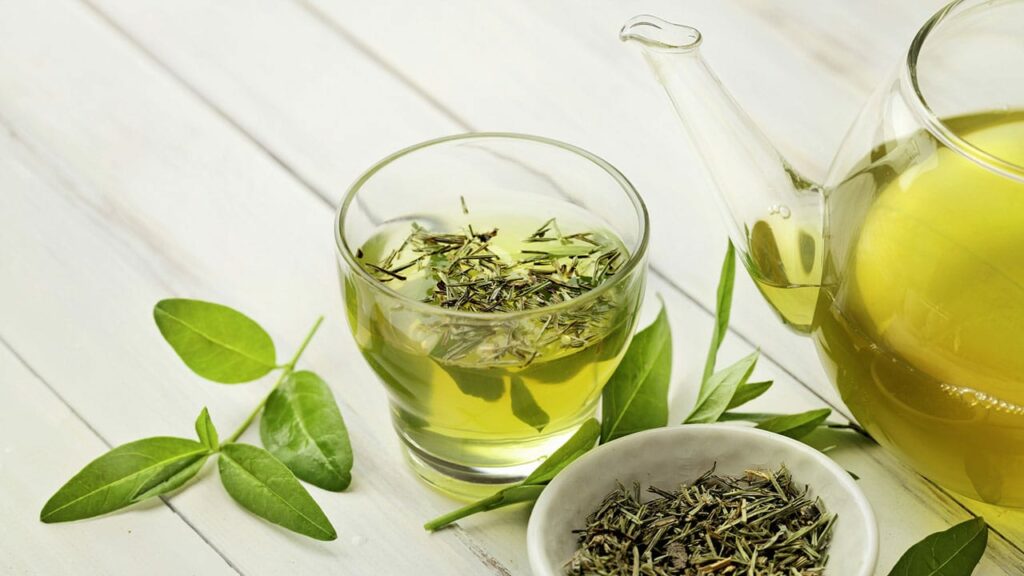Evidence-Based Benefits of Green Tea

Bleeding following a tooth extraction is normal. In fact, the formation of a blood clot in the empty socket is a necessary part of the healing process. But there are cases in which the post-operative bleeding may be excessive. This can happen for any number of reasons. But one way or another, the bleeding needs to be controlled.
HEMOSTATIC MEASURES
The application of pressure, such as biting down on gauze on the extraction site is often the first recommendation to curb bleeding. The next step may be to apply cold compresses, clove oil, and saltwater. If these fail, hemostatic agents, such as tranexamic acid used as a mouthrinse, may be considered.
Green tea, as a hemostatic remedy, has been gaining more attention recently. A 2014 study evaluated the efficacy of using green tea extract to control gingival bleeding following a posterior mandibular extraction. Sixty-two patients were given either green tea extract-impregnated sterile gauze or plain sterile gauze to bite on.1
The study showed that green tea extract was significantly effective in stopping socket bleeding and in reducing subsequent oozing. The researchers attribute these effects to the fact that while all teas contain tannins, a type of polyphenol featuring astringent properties that result in vasoconstriction, green tea, in particular, is rich in polyphenol compounds (antioxidants).
ADDITIONAL BENEFITS
But hemostasis is not the only benefit offered by green tea. In a recent study, researchers found that patients biting on green tea-impregnated gauze reported significantly less pain than those biting on saline-soaked gauze. They concluded that green tea extract may be an appropriate and safe choice for post-operative pain control.2
Green tea also has antimicrobial properties. It even inhibits the growth of Staphylococcus aureus and Pseudomonas aeruginosa and decreases the microbial load, reducing the risk of surgical site infection.3
Indeed, several studies have shown beneficial effects of green tea on periodontal and oral tissues.4,5
WHY GREEN TEA?
So, what’s so special about green tea? Though white, black, oolong, and green tea are all derived from the same plant (Camellia sinensis), they originate from different varieties and are processed differently.2
Unlike black tea, green tea leaves are quickly heated after harvesting, and not allowed to oxidize. While both black and green teas are rich in antioxidants, green tea contains epigallocatechin-3-gallate. This component is widely reported to have numerous health benefits, including metabolic regulation, as an antioxidant and anti-inflammatory, and as an anticancer agent.
REFERENCES
- Soltani R, Haghighat A, Fanaei M, Asghari G. Evaluation of the effect of green tea extract on the prevention of gingival bleeding after posterior mandibular teeth extraction: a randomized controlled trial. Evid Based Complement Alternat Med. 2014:2014:857651.
- Sh EM, Haghighat A, Fattahi B, Tajmiri G, Alizargar J. Evaluation of the effect of green tea extract on postoperative pain management following surgical removal of impacted mandibular third molar. Dent Res J (Isfahan). 2023;20:17.
- Kalalinia F, Amiri N, Mehrvarzian N, et al. Topical green tea formulation with anti-hemorrhagic and antibacterial effects. Iran J Basic Med Sci. 2020;23:1085–1090.
- Woelber JP, Reichenbächer K, Groß T, Vach K, Ratka-Krüger P, Bartha V. Dietary and nutraceutical interventions as an adjunct to non-surgical periodontal therapy — a systematic review. Nutrients. 2023;15:1538.
- Vyas T, Nagi R, Bhatia A, Kumar Bains S. Therapeutic effects of green tea as an antioxidant on oral health — a review. J Family Med Prim Care. 2021;10:3998-4001.






Responses